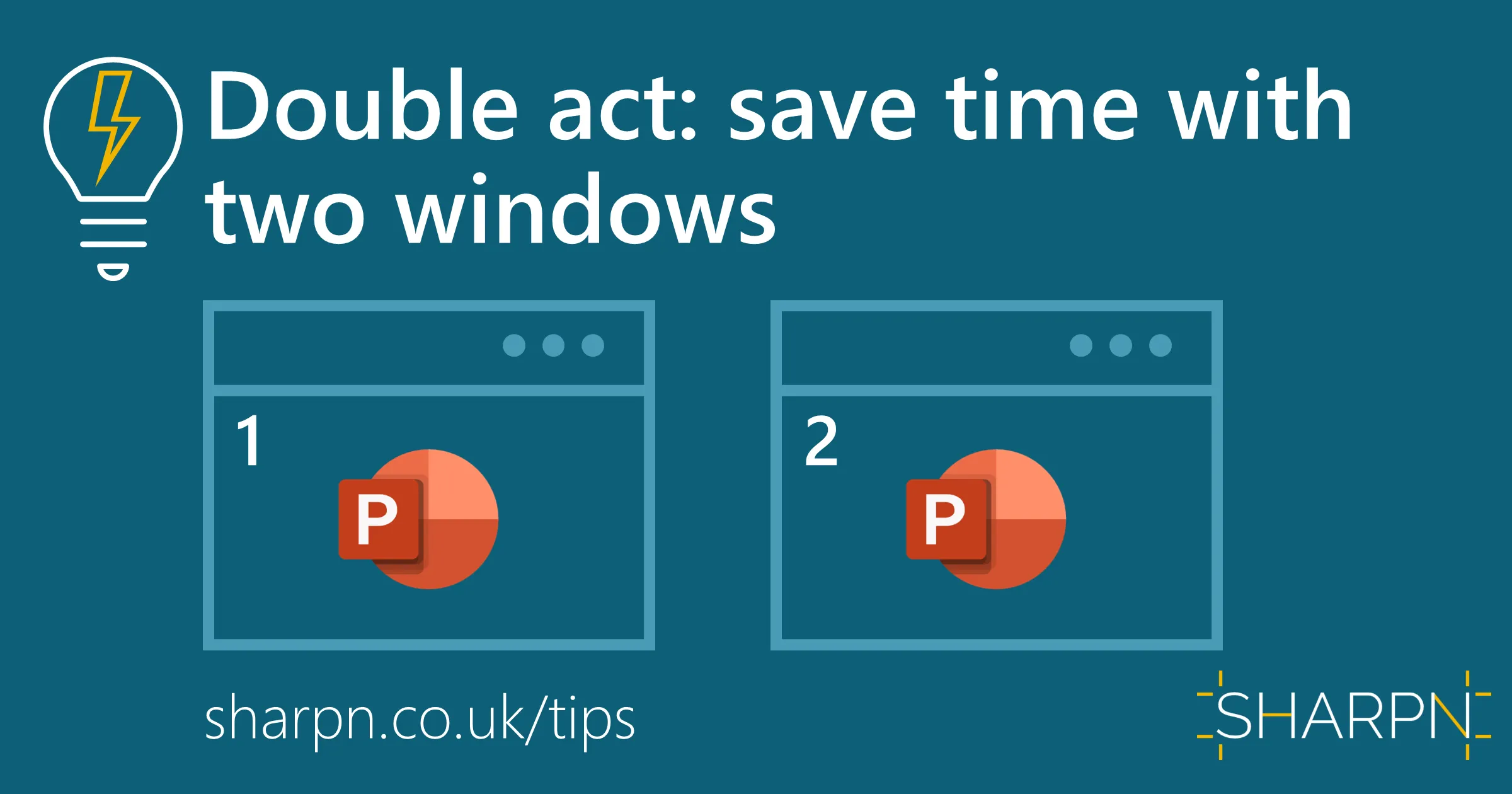.png)
.png)
.png)
Less vs. more: the size of your deck is not important, it’s what you put in that counts
People often talk about decks to me by starting with how many slides it needs to have. Should a deck have lots of slides, or as few as possible? And while it is true that – like a small scoop of intense gelato – less can be more, a deck should be as long as it needs to be. Of course, that’s the tricky bit: what needs to go into it?
I’ve seen the whole range, from single slides that don’t tell a clear story, to hard-to-navigate 200+ page documents that raise more questions than they answer. And while I have no simple formula, here are some guidelines for creating a deck that is as effective as possible. That’s much more important than the slide count.
1. Do you even need a deck?
This might sound strange coming from someone who makes a living from slides, but sometimes the best deck is no deck. PowerPoint is one of the communication tools in your toolbox, but it shouldn’t be the default one.
Think about this: is your intention to listen, co-create or tell?
Listening: spend your time crafting a good set of questions. Then ask, and listen. Ask more questions. Whiteboard if you need to. But don’t turn up with slides.
Co-creating: maybe pre-prepare slides for frameworks to collect and shape ideas, or prototypes to knock about. Rough and ready content that your colleagues can help you flesh out and improve on.
Telling: produce a deck of slides. But with carefully considered content (read on…)
2. Focus on what you need to happen
Always keep in mind the outcome that the deck is there to help you to achieve. Ask yourself these three questions:
Who is the main audience?
What do you need them to remember?
What do you need them to do? (And when?)
As you write your slides, check that they are working towards your objective. It might be that you need senior approval on direction or budget. Or perhaps you need a set of people to do something, or do something differently. But you nearly always need something from somebody, so make sure that is clear. To you, and to your audience.
3. Be engaging
People will only do something if they remember correctly what that is. And the key to being memorable is engagement. Basically, you need to hook people in and keep them interested.
Easier said than done, of course. But the key is to have a strong narrative in your deck. How you achieve that depends entirely on your context. But it helps to include people (for emotional connection) and a sense of jeopardy or opportunity. Make sure you try to see from their point of view..
It’s also helpful to state the conclusion that each slide is making, to help people follow along. It’s worth using active slide titles and remembering they don’t know what you know.
4. Include an Executive Summary
They aren’t just for execs. An exec summary gives people the ‘so what?’ of your deck – the points you are trying to land. Much like the advance itinerary for a holiday tour. So they know exactly what they should expect, and the rest of the deck (like the holiday itself) is you showing them that in more detail.
Exec summaries should…
…contain all the key points: what you need people to remember and what you need them to do.
…be brief. One or two slides should normally be sufficient.
…not just be a list of bullet points. Try a three-column format: the background context (who, what, where etc), then what the issue or opportunity is, and then how you plan to resolve it and the support you need. Or perhaps it’s: this is the data, this is out approach, these are our findings.
…include the most important data points, but only in summary. Can you group and subtotal numbers?
Repetition aids memory, so an exec summary tells people what you are going to tell them, and then you tell them it. It helps.
5. Prioritise clarity over detail
When you have a complex message to land, you have probably considered a lot of information. And gone through a considered thought process to reach the conclusion that you are documenting.
But don’t fall into the trap of feeling obligated to include all of that detail in your analysis. A lot of the time, people want to have confidence that you have ‘done the maths’ but they usually don’t want to see your ‘working’.
That doesn’t mean you have to leave the detail out of the deck. That is what appendices were invented for. Then you can pull up the detail if you need to. But only if you need to.
Think of a deck in three parts
- The exec summary: all of your key points and actions summarised
- The main deck: your narrative in enough detail to support your recommendation, ask etc.
- The appendices: any supporting detail that some of your audience may want to look at to increase their confidence in what you have put in the main deck. But optional reading.
What you put in the main deck vs. what you park in the appendix is entirely down to your context. But consider these points:
Details provide opportunities for ‘rabbit holes’: conversations that take your narrative off at a tangent. Keeping details in the appendix will help you and your audience focus on what you need to.
You need to be honest. Don’t bury a difficult message or contentious point in the appendix.
Signpost in the main deck where you have put relevant detail in the appendix. You can even make it easier for people by adding a hyperlink (Insert > Link > Place in this document). Or try a Slide Zoom (Insert > Zoom > Slide Zoom then select the inserted thumbnail, go to the new Zoom menu and check the Return to Zoom box. Preview in slide show mode.)
I view it as a cardinal sin to use a deck to essentially ‘show off’ everything that you know. To bombard people with reams of facts and data that they don’t actually need. Don’t be that person.
Lastly, remember that (in my opinion) the appendix doesn’t count towards the size of your deck.
6. Make the key points stand out
Help people understand what your most important points are; don’t rely on them being mind readers. And don’t rely on them carefully reading every word either: skim-reading is a real thing.
Again, how you flag up key information is entirely down to context, but some of the easier things to do are:
Bold key words, perhaps also in a main template colour that stands out.
Try to keep the general use of colour simple. If you can stick to one colour (different shades of it are fine) and one highlight colour, then those key points will stand out even more. (And as a bonus, a simple colour scheme enhances the perception of the quality and trustworthiness of your deck).
Another way of emphasising something is to de-emphasies everything else by making them a fairly pale grey (as long is it is still readable). Just like how phone and web apps ‘grey out’ non-applicable options.
Only highlight what is important, and don’t add formatting for the sake of it. If everything stands out, nothing stands out.
Longer blocks of text can be highlighted by using your highlight colour as a background fill. (You may need to make the text white.)
Use annotation devices such as Post-it notes to draw attention to key items.
When using charts, consider if you need to make one data series or data point stand out. Greying out is useful here. (See this article for that and other chart tips.)
7. Don’t be scared of white space
The starting point for this article was: how many slides do I need? One of the things I often see is people feeling like slides need to be full. (They don’t.)
Perhaps you recognise this: you have written a slide and maybe half of it remains empty. You have a nagging feeling that it looks unfinished, so you are tempted to do one of two things:
Fill the space with more content. Perhaps it’s unhelpful ‘waffle’ to pad out the text. Or perhaps it is detail that you have previously banished to the appendix. Or some icons or photos.
Stretch the content to fill the page: make the font bigger or enlarge your chart/image/table/diagram.
Neither of these are helpful to the audience or to you. Just live with white space. It gives your content room to breathe.
And have you ever heard of an author adding more words to the end of a chapter so that it reaches the bottom of the page? Exactly.
Helpful?
Does any of this ring true? If you are interested in learning more about creating effective slide decks, I offer training and coaching. Reach out for details.
Want more tips like this in your inbox?
It's useful*
It doesn't flood your inbox (monthly-ish).







.jpg)
.png)



